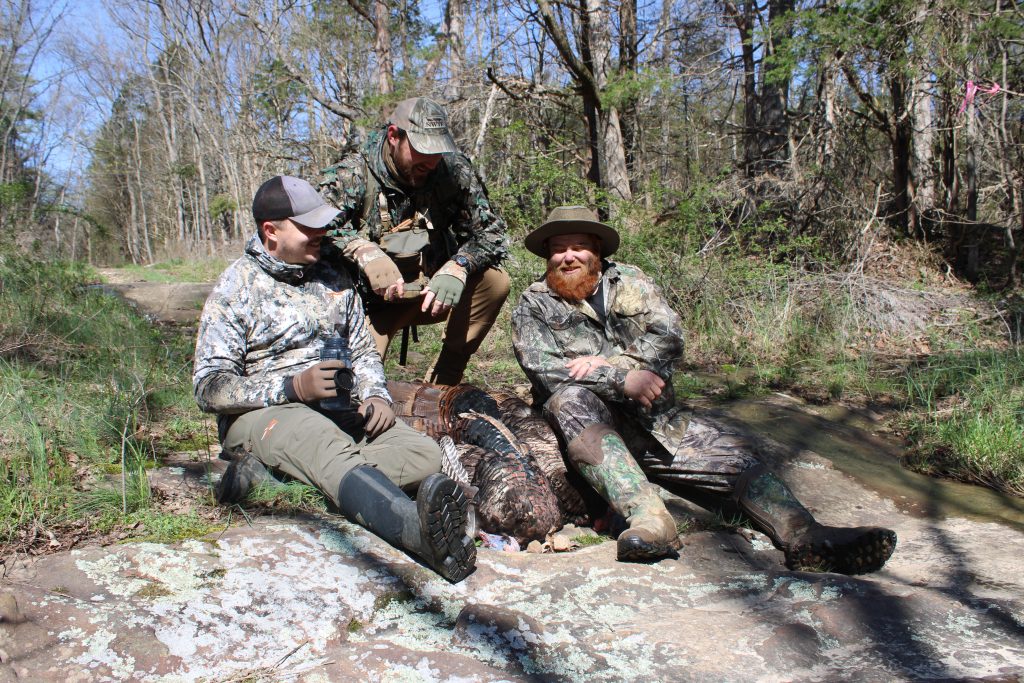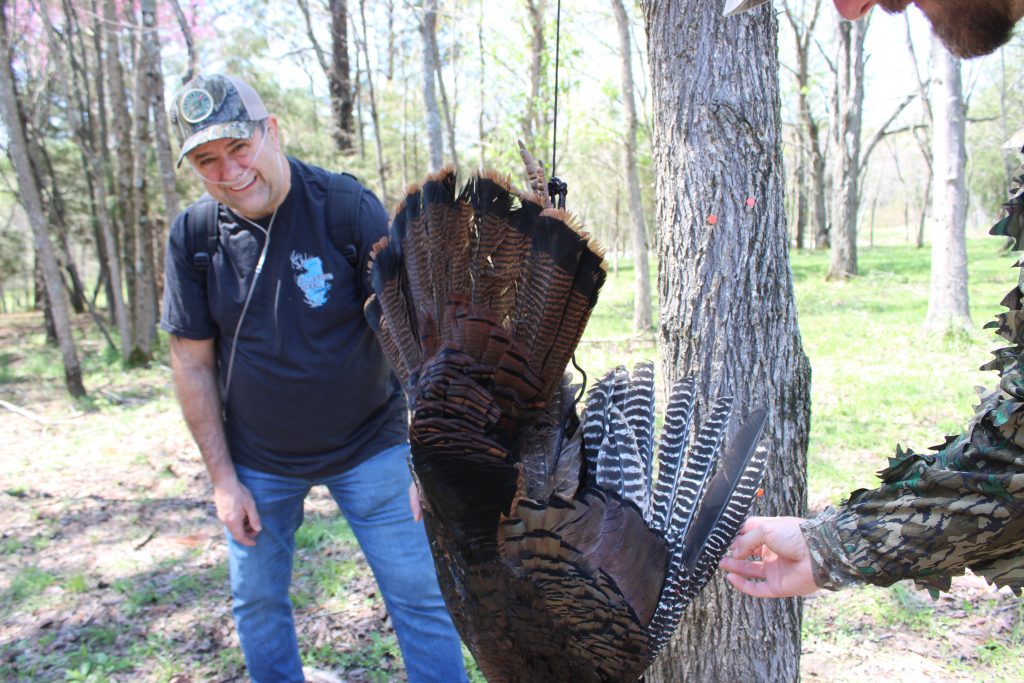Convergence of a Mission
The NWTF’s dual mission — the conservation of the wild turkey and the preservation of our hunting heritage — shone brightly on a recent NWTF Wheelin’ Sportsmen hunt in the Shawnee National Forest, a site where the NWTF has impacted over 4,000 acres of habitat.
Established in the 1930s, the Shawnee National Forest includes about 284,000 acres of primarily mixed hardwood forest between the Ohio and Mississippi rivers. The glades, undulating hills, grassy openings, and diverse trees and vegetation are truly a national treasure. A quick hike around most parts of the forest shows how the forest is being managed for resiliency and wildlife sustainability.
However, in the early ’90s, forest management on the Shawnee was unwelcome, as conflicts surrounding timber harvests arose from anti-management groups. People chained themselves to logging equipment. A court battle ensued, and a federal court placed a formal injunction against timber harvesting in the Shawnee National Forest in 1996. This effectively halted all management activities within the forest. The result was not ideal for the native ecosystem that relies on disturbance.
“Lack of management here on the Shawnee due to the court-ordered injunction resulted in an explosion of non-native invasive species and a steady increase in soft hardwood species within the native oak-hickory ecosystem,” NWTF Forester Chase Seals said.
Not too long after the injunction was lifted, around 2013, the NWTF and the Forest Service created a cooperative position that served the Shawnee National Forest and the Land Between the Lakes National Recreation Area. That position has now evolved into Seals’ role, which focuses solely on the Shawnee National Forest. Seals’ position is a cooperative role between the NWTF, the USDA Forest Service and the USDA Natural Resources Conservation Service.
To date, the conservation impact on the Shawnee involving the NWTF has been astounding. Through a variety of forest management techniques, including timber stand improvement, crop tree release and invasive species removal, the NWTF has enhanced over 4,000 acres across different regions of the national forest.
This work has helped remove non-native species and opened areas that were overly stocked from years of no management, allowing mast-bearing trees to better provide food for wildlife and diversifying the habitat within the forest for the critters that rely on it.
And while removing overly dense vegetation from the forest has been paramount in creating early successional habitat for wild turkeys and other species, the NWTF and the Forest Service are reintroducing trees to the forest, too.
The collaborative recently addressed insect infestations in multiple areas of the forest, planting over 53,000 trees in locations that had been wiped out by the ash borer and gall wasps. The NWTF and the Forest Service planted an additional 12,000 trees in another forest region experiencing an oak wilt fungal infestation.
“All in all, I think the future of the Shawnee National Forest is bright,” Seals said. “The current staff there are great people and habitat professionals that love the outdoors and respect the recreational benefits the Shawnee provides. They are dedicated to managing the Shawnee in the best way possible to rehab and promote the native ecosystems.”
Hard Work Pays Off
Years of work, collaboration and thousands of acres of habitat management on the Shawnee culminated recently when disabled veterans harvested three birds out of the forest on the week of the Illinois spring opener, part of an NWTF Wheelin’ Sportsmen hunt.
The hunt was made possible thanks to the Illinois NWTF State Chapter, the Illinois Department of Natural Resources, the Forest Service and the Illinois Chapter of The Fallen Outdoors, a nonprofit organization dedicated to empowering veterans by connecting them to the therapeutic benefits of the great outdoors.
In addition to being an adept forester and conservationist, Seals helped as a hunting guide on the NWTF Wheelin’ hunt. On day two of guiding two disabled veterans, he couldn’t help but point out the management work the NWTF and the Forest Service have accomplished in the vicinity.
“You see where it is all thinned out along that hill,” he asked. “That is where we have done some timber stand improvement work.”
Gobbles echoed in the distance.
Along with Seals were Jan Segatto and Justin Lafollette, disabled veterans and volunteer members of The Fallen Outdoors. Segatto, fresh from a 30-yard miss on a gobbling turkey the day before, had never harvested a turkey, and Lafollette had yet to harvest a bird in Illinois. After not being able to close the gap on the distant gobbling birds on day two, Seals opted to try a new spot, another location where the NWTF had accomplished conservation work.
Sometimes, a turkey hunt is uneventful. Other times, it can go from zero to 100 in a moment’s notice. For Segatto and Lafollette, the latter happened as they traipsed through a new block of the Shawnee.
After Seals explained where he wanted to set up, the crew began hiking to the destination, owl hooting along the way, hoping to elicit a shock gobble. After about 15 minutes of moving into the forest, just as it felt like the rest of the hunt could slip away, a gobble thundered off, about 80 yards ahead.
Seals immediately got the two veteran hunters set up on a tree, positioned decoys and began yelping, purring and scratching. As the gobbles became louder and more frequent, it was obvious that two toms were making their way to Seals’ ruse.
In what seemed like seconds, two bright red heads crested the ridge, about 25 yards in front of Segatto and Lafollette. And just like that, the whole crew was celebrating two harvested turkeys — Segatto’s first bird and Lafollette’s first Illinois turkey.

“I’d be lying if I said my knees weren’t shaking a little bit when we came upon these birds,” Segatto said. “A big redemption from the miss yesterday.”
The hunt was largely orchestrated by NWTF volunteer Michael Howie, Illinois Wheelin’ Sportsmen coordinator. Howie, who has dedicated countless hours to getting others outdoors, also harvested his first turkeys on the Shawnee National Forest Wheelin’ Hunt, as he is a disabled veteran.
Knowing that partners want to build upon the hunt in the future, Howie chose to participate in the hunt himself, allowing him to better understand what future needs and accommodations will be needed to get more folks out in the woods.

“I’d love to see it build to where we have 20, 30 people out here; that’s my goal,” Howie said.
Thanks to the conservation efforts of the NWTF and the Forest Service in the Shawnee, the life-changing power of the outdoors is in full effect on the Shawnee and across the country. The conservation of the wild turkey and the preservation of our hunting heritage work in tandem, one event and one project site at a time.
